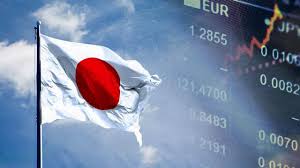Germany’s central bank expects the country’s economy to grow in April-June for the second consecutive quarter after falling at the end of 2023.
According to preliminary calculations of the statutory office of the Federal Republic of Germany, in January-March GDP increased by 0.2% compared to the previous three months. It fell 0.5% in October-December 2023.
“The economy is likely to expand slightly again in the second quarter,” the Bundesbank said in a statement on Wednesday.
Activity in the services sector was likely to have continued to strengthen on the back of rising household income and consumer spending.
“Growth in household disposable income is likely to take the upper hand from consumer uncertainty,” Central Bank analysts suggested.
However, they noted that the construction sector remains very weak.
The German labor market is expected to remain resilient and wages look set to continue to rise rapidly. This could be a risk to cooling inflation, which the Bundesbank estimates will accelerate slightly again in May.
The final data on Germany’s first-quarter GDP dynamics will be released on May 24, while preliminary information for the second quarter will be presented on July 30.
Earlier Experts Club analytical center and Maxim Urakin released a video analysis of how the GDP of the world’s countries has changed over the past years, more detailed video analysis is available here – https://youtu.be/w5fF_GYyrIc?si=BsZmIUERHSBJrO_3.
Subscribe to Experts Club YouTube channel here – https://www.youtube.com/@ExpertsClub
CENTRAL BANK, ECONOMY, EXPERTS CLUB, GDP, GERMANY, MACROECONOMICS, URAKIN

Japan’s economy contracted 0.5% in the first quarter relative to the previous three months, according to preliminary government data. Analysts, whose average estimates are quoted by Trading Economics, had expected a 0.4% decline in GDP.
According to the revised data, the economy was unchanged in the fourth quarter of 2023, while previously reported growth of 0.1%.
On an annualized basis, Japanese GDP contracted 2% last quarter after a revised zero change a quarter earlier. The consensus forecast called for a 1.5% drop in January-March.
Consumer spending in the first quarter decreased by 0.7% relative to the previous three months, business investment – by 0.8%. Government spending rose by 0.2%.
Exports decreased by 5% after growth of 2.8% quarter earlier, imports – by 3.4% (+1.8% in October-December).
Earlier Experts Club analytical center and Maxim Urakin released a video analysis of how the GDP of the world’s countries has changed in recent years, more detailed video analysis is available here – https://youtu.be/w5fF_GYyrIc?si=BsZmIUERHSBJrO_3.
Subscribe to Experts Club YouTube channel here – https://www.youtube.com/@ExpertsClub

The National Bank of Ukraine has estimated Ukraine’s real gross domestic product (GDP) growth in the first quarter of 2024 by the same period last year at 3.1%, while in January it forecast it at 7.1%.
“Real GDP growth in the first quarter of 2024, according to NBU estimates, was weaker than expected, primarily due to restrained budget expenditures amid uncertainty about the receipt of external financing. An additional factor was the blockade of the western border, which restrained the activity of certain types of activities,” the National Bank explained in the Inflation Report published on its website.
At the same time, as the NBU pointed out, stable operation of the sea corridor, favorable weather and increased domestic demand supported economic growth. The central bank added that fiscal policy remained accommodative and, together with the effect of a significant increase in fiscal spending at the end of 2023, significantly fueled aggregate demand.
Earlier, in late April, the Economy Ministry estimated Ukraine’s GDP growth at 4.5% in the first quarter of this year.
As the National Bank notes, moderate GDP growth rates will remain until the end of 2024. “The main factors of growth will remain the preservation of soft fiscal policy, revitalization of external demand, as well as further adjustment of business and population to the conditions of significant security threats. However, the pace of economic growth will slow given the impact of the war and the depletion of growth momentum from the low base of 2022,” the NBI pointed out.
It added that the recovery will also be constrained by the impact of the destruction of energy infrastructure.
According to the updated forecasts, GDP growth will accelerate to 3.7% in the second quarter (the NBU expected it at 4.8% in January) before slowing to 1.3% (1.7%) in the third quarter and accelerating again to 4.1% (2.0%) in the fourth quarter.
Overall, for 2024, the NBU worsened its growth forecast for the Ukrainian economy to 3% from 3.6% in its January report, and for 2025 to 5.3% from 5.8%.
“The negative contribution of revised estimates of the e/e deficit to the change in real GDP in 2024 is estimated at 0.6 percentage points (pp), and 0.5 pp in 2025. Instead, the impact on GDP of a smaller grain harvest in 2024 will be insignificant due to the reorientation of agricultural producers to more marginal crops, particularly oilseeds,” the central bank said.
According to the regulator, the balance of risks of the baseline forecast is shifted towards deterioration of Ukraine’s economic growth rates and increased price pressure.
The National Bank in the updated Inflation Report increased the number of key risks of the forecast (with a strong impact and probability of 25-50%) to three: to the risk of a longer period and intensity of the war added the risk of large budgetary needs (a quarter earlier the NBU estimated its probability at 15-25%) and large damage to energy and port infrastructure (a quarter earlier the impact of this risk the central bank considered moderate).
At the same time, the probability of the risk of reduction of volumes and loss of rhythm of international aid receipts and continuation of partial blocking of cargo traffic across the border by some EU countries was reduced from 25-50% to 15-25%, but the degree of impact of the latter risk was increased from weak to moderate.
In addition, the NBU added a new risk – aggravation of the situation in the Red Sea, but estimated its probability at 15-25% and the degree of influence as low, as well as excluded the risk of increasing the capacity of maritime export routes, which is positive for the forecast.
Earlier Experts Club analytical center and Maxim Urakin released a video analysis of how the GDP of the world’s countries has changed in recent years, more detailed video analysis is available here – https://youtu.be/w5fF_GYyrIc?si=BsZmIUERHSBJrO_3 Subscribe to Experts Club YouTube channel here – https://www.youtube.com/@ExpertsClub.
EXPERTS CLUB, GDP, MACROECONOMICS, NATIONAL BANK, UKRAINE, URAKIN

The article collects and analyzes the main macroeconomic indicators of Ukraine. In connection with the entry into force of the Law of Ukraine “On Protection of the Interests of Business Entities during Martial Law or a State of War”, the State Statistics Service of Ukraine suspends the publication of statistical information for the period of martial law and for three months after its termination. The exception is the publication of information on the consumer price index, separate information on statistical indicators for 2021 and for the period January-February 2022. The article analyzes open data from the State Statistics Service, the National Bank, and think tanks.
Maksym Urakin, PhD in Economics, presented an analysis of macroeconomic trends in Ukraine and the world based on official data from the State Statistics Service of Ukraine, the NBU, the UN, the IMF, and the World Bank.
Macroeconomic indicators of Ukraine
Maksym Urakin presented data from the National Bank of Ukraine on the improvement of the financial situation in 2023 compared to 2022 and the forecast for 2024.
“The baseline scenario of the NBU’s macroeconomic forecast assumes the continuation of prudent monetary and fiscal policies aimed at maintaining macrofinancial stability. Ukraine is also expected to fulfill its obligations under cooperation programs with international partners, which will continue to provide financial support in sufficient amounts. The forecast envisages a significant reduction in security risks starting in 2025, which will allow unblocking seaports, expanding opportunities for investment and economic activity, and facilitating the return of forced migrants to Ukraine. “, – emphasized Urakin.
The expert noted that the main risks for the economy remain the duration of the war and the instability of international assistance.
“Risks such as additional budgetary needs, in particular for maintaining defense capabilities and eliminating the consequences of destruction, as well as significant deficits, in particular in the energy sector, remain relevant. Significant damage to the port and energy infrastructure will limit exports, and the continued partial blocking of borders with certain EU countries for freight transportation will limit both imports and exports. Another risk is the deepening of negative migration trends,” the economist said.
According to the expert, the pace of international assistance to Ukraine decreased significantly in the fourth quarter of 2023
I quarter of 2024, which may negatively affect the economic recovery this year in the context of the war.
Prospects for the Global Economy
Maxim Urakin also analyzed the global economy, noting a slowdown in growth in 2024 to 2.2%.
“The analysis of the global GDP dynamics shows that the global economy continues to recover from the pandemic, but geopolitical instability has a restraining effect on this growth. According to Maxim Urakin, it is important to monitor developments and adapt to changing conditions to ensure sustainable economic growth in the future. In this context, Ukraine needs to focus on strengthening domestic political stability, restoring economic potential and continuing reforms to improve its post-war prospects and strengthen its position on the global stage,” the expert explains.
According to the expert, the current macroeconomic situation in Ukraine and the world requires further analysis. For Ukraine, the main challenges in the coming years will be the need to restore Ukraine after the war and manage the public debt.
Earlier, the Experts Club analytical center released a video on how the GDP of countries has changed in recent years, more detailed video analysis is available here – https://youtu.be/w5fF_GYyrIc?si=HO-KT2UC8pYdUwCH

Receipts of taxes, fees and mandatory payments to the general fund of the state budget of Ukraine, according to operational data, in April amounted to UAH 153.6 billion compared to UAH 164.3 billion in March and UAH 184.8 billion in February, such operational data (as of 16:00 on April 30) reported the Ministry of Finance on Tuesday.
According to its data, the most of all reduced receipts of payments from the State Tax Service – to 59.7 billion UAH from 105.7 billion UAH in March and 107.4 billion UAH in February, which is due to high payments in previous months of income tax, in particular, by banks, as well as advance payments.
It is pointed out that in April, income tax revenues amounted to only UAH 3.2 billion against UAH 60.1 billion in March and UAH 61.0 billion in February, but in April, part of its profit of UAH 38.64 billion was transferred to the budget by the National Bank, although the Ministry of Finance does not mention it in the summary.
As for other taxes, personal income tax and military levy increased to UAH 16.5 billion (UAH 15.7 billion) in April, rents to UAH 5.5 billion (UAH 1.4 billion), and excise tax to UAH 11.5 billion (UAH 9.2 billion).
Value added tax also increased to UAH 22.8 billion (UAH 18.0 billion): collected UAH 34.8 billion (UAH 29.0 billion), refunded – UAH 12.0 billion (UAH 11.1 billion).
Receipts from the State Customs Service increased in April to UAH 48.9 billion from UAH 45.8 billion in March and UAH 39.8 billion in February. As the head of the specialized parliamentary committee, Daniil Getmantsev, pointed out on Tuesday, about 2.5 billion hryvnias of additional revenue came from the unblocking of the Polish border over the past week.
The Finance Ministry pointed out that the monthly revenue estimate of the general fund of the state budget, according to operational data, was exceeded by 29.5% (+35 billion UAH), including by the State Tax Service – by 7.9% (+4.4 billion UAH), while the State Customs Service – by 14.5% (+6.2 billion UAH).
In addition, the general fund of the state budget received UAH 2.7 billion of international aid in the form of grants in April, compared to UAH 3.1 billion in March and UAH 31 billion in February.
“In general, according to operational data, at the end of April 2024, the general and special funds of the state budget received UAH 200.8 billion (UAH 225.9 billion in March and UAH 229.0 billion in February) of taxes, fees and other payments. In addition, about UAH 40.1 billion (in March – UAH 39.0 billion) in the form of ERUs was received by the Pension Fund and social insurance funds,” the ministry added, thanking taxpayers for your contribution to the support of the Ukrainian army and financial stability of the country.
Data on expenditures in April are not yet available.
As reported, the Verkhovna Rada adopted the state budget for 2024 with a deficit of UAH 1.57 trillion, or 20.6% of projected GDP. Revenues of the state budget-2024 are set at UAH 1.77 trillion (not taking into account possible grant aid), expenditures – UAH 3.36 trillion at an average annual exchange rate of UAH 40.7/$1.
State budget-2023 revenues amounted to UAH 2.67 trillion, of which grant aid amounted to UAH 0.43 trillion. Cash expenditures of the state budget for the past year exceeded UAH 4 trillion, and the deficit amounted to UAH 1.33 trillion at an average annual exchange rate of about 36.6 UAH/$1.
Earlier Experts Club analytical center and Maxim Urakin released a video analysis of how the GDP of the world’s countries has changed in recent years, more detailed video analysis is available here – https://youtu.be/w5fF_GYyrIc?si=BsZmIUERHSBJrO_3 Subscribe to Experts Club YouTube channel here – https://www.youtube.com/@ExpertsClub.
BUDGET, decreased in April, EXPERTS CLUB, GDP, MACROECONOMICS, MINISTRY OF FINANCE, TAXES, UKRAINE, URAKIN

Ukraine’s real gross domestic product (GDP) growth for January-March 2024 amounted to 4.5% (+/- 1%) from 3.6% (+/- 1%) at the end of January-February.
Growth accelerated to 4.6% (+/- 1%) in March from 3.9% (+/- 1%) in February and 3.5% (+/- 1%) in January this year, according to an estimate released on the website of the Ministry of Economy of Ukraine.
“In March 2024, the trend of recovery growth continued, supported by the stable operation of the Ukrainian maritime corridor (stimulated activity in rail transport, metallurgy and metal ore mining), increased production capacity in the extractive industry, intensified production of mineral fertilizers, increased demand for construction materials, taking place against the backdrop of improved business sentiment … and revival of consumer activity …,” the Ministry of Economy pointed out.
The Ministry added that in March, almost all aggregated economic activities formed a positive contribution to the total GDP. Thus, exports of products of agricultural production and mining and metallurgical complex were provided by the Ukrainian Sea Corridor; and investment demand generated by the budget, as well as the increase in production capacity in the extractive industry formed a positive contribution of production types.
At the same time, it is pointed out that the dynamics of electricity production slowed down significantly in the context of significant rocket attacks in late March, which led to serious damage to energy infrastructure and will require a significant period of time and resources to restore it.
As reported, the National Bank of Ukraine on April 25 worsened its forecast for the country’s GDP growth this year from 3.6% to 3% after 5.3% last year.
When approving the draft state budget for the second reading in early November 2023, the government forecasted GDP growth of 4.6% this year.
Earlier Experts Club analytical center and Maxim Urakin released a video analysis of how the GDP of the world’s countries has changed in recent years, more detailed video analysis is available here – https://youtu.be/w5fF_GYyrIc?si=BsZmIUERHSBJrO_3 Subscribe to Experts Club youtube channel here – https://www.youtube.com/@ExpertsClub
EXPERTS CLUB, GDP, MACROECONOMICS, MINISTRY OF ECONOMY, UKRAINE, УРАКІНА